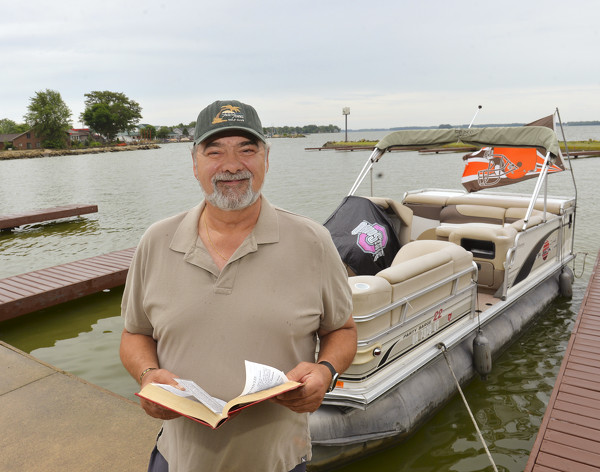Thursday, July 1st, 2021
No-contact advisories return to lake beaches
By Sydney Albert
CELINA - No contact advisories are back on at several beaches around Grand Lake after new water samples showed microcystin algal toxin levels had risen above the state threshold.
According to data provided by the Ohio Department of Health, no contact advisories are back in effect at the Grand Lake St. Marys State Park campground beach and at East and West beaches. Water samples were taken from those areas June 28 after reports of multicolored algal blooms in back channels and along the northern shores began circulating.
The state threshold for a no contact advisory is eight micrograms of microcystin per liter. Microcystin is a toxin produced by cyanobacteria, more commonly called blue-green algae, that can sicken people and animals. Water at East Beach tested at 22.2 micrograms per liter, while the campground beach and West Beach both tested at 50 micrograms per liter.
No toxin level results from Windy Point were available Wednesday. The last samples for that area were taken June 20.
The Ohio Department of Natural Resources tests beaches when there is a visual presence of a suspected harmful algal bloom, according to the state's recreational HAB Response Strategy. If toxin levels exceed eight micrograms per liter, ODNR is supposed to resample weekly until microcystin values fall below the no contact threshold for two consecutive weeks.
If toxin levels don't exceed the threshold and a bloom is not visible, they do not resample but monitor the area for changes, only resampling if a HAB reappears.
The state on May 26 had removed a no contact advisory on the lake, making it the first time Grand Lake had not been under a water advisory due to elevated algal toxins since 2009.
Phosphorus-fed toxic blue-green algal blooms have resulted in state-issued water advisories on the 13,500-acre recreational lake every year since 2009. The local watershed is the only in the state designated as distressed due to unsafe algal toxin levels, a designation the watershed received in January 2011 after animals and humans were sickened by the toxins in 2010.
Elevated microcystin algal toxins can cause skin rases, respiratory and gastrointestinal distress and harm the liver, Ohio EPA officials have said.
After the no contact advisory had been removed, Wright State University-Lake Campus professor of biology Stephen Jacquemin said blue-green algae activity in the lake had been at its lowest levels in more than a decade. Jacquemin called the removal of the advisory a "milestone," but also noted more work was needed to improve the lake's water quality and indicated the no contact advisory might be placed back on the lake later in the season.


